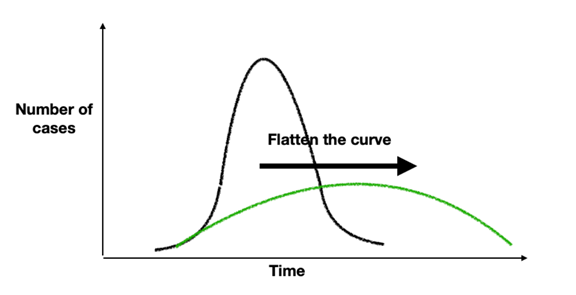Flatten The Curve - But Mind The Gap
- EBnet Employee Benefits Network

- Jun 26, 2022
- 3 min read

Disclaimer: I am not medically trained and I acknowledge that COVID-19 is an unprecedented health, social and economic challenge. In order to think about such massive challenges I prefer to try and do it in ‘bite size chunks’. Hence this article, which tries to keep it simple for a reason.
Everyone has become familiar with attempts to ‘flatten the curve’. Simply put, strong measures such as lockdowns limiting movement and even simple measures such as enforced social distancing at supermarkets are being used to stop the speed of infection of the COVID-19 virus. By doing this it is argued that we can reduce the exponential infection rate at which the virus spreads from a sharp significant spike to a lower, more gentle peak.
This slows the infection rate, allows hospitals and health agencies more time to deal with the pandemic and hopefully eventually reduces the mortality rate as well.
Graph 1 below is a simple illustration of this concept. Looking at the experience of countries such as Singapore and South Korea this ‘flattening of the curve’ has certainly resulted in some success. It may also be true for China where the virus began, but the veracity of the reported numbers there has been questioned by some analysts.

SA was one of the more decisive countries when dealing with the onset of the virus. After initially limiting the size of gatherings and encouraging social distancing, we moved rapidly into an enforced three week lockdown on 26 March. President Cyril Ramaphosa and his government have been praised for their quick and determined action. I fully endorse this praise.
But here is the issue. The impact on the economy is almost the mirror image of the flattened infection curve above. By introducing strong measures to flatten the curve, those very measures also reduce economic activity. That can’t be helped and may be justifiable initially. However, the real danger becomes that the longer the measures are in place the more difficult it becomes to restart the economy when you need to.
It is not just like flicking a switch. Many smaller businesses with weak balance sheets may have already closed up shop, whilst other larger businesses which depend on long supply chains could take months, or even years, to regain the ‘normal’ output levels enjoyed before the crisis. The ‘gap’ between the expected economic recovery and the actual recovery can be very significant (see graph 2 below).

The effects of a longer more pronounced economic slow down would then become painfully apparent.
These include:
Much higher unemployment - SA already has an unemployment rate of nearly 30%. Post the COVID-19 crisis this figure could rise dramatically with an unemployment rate of 50% being a real possibility if the lockdown measures continue for too long. Already unemployment in the USA (where there is currently not an enforced lockdown country-wide) has risen from 3% to 10% and according to some commentators could go to levels as high as 30%. That will equate to 50 million unemployed people, almost the size of the population of SA.
A significant contraction in GDP - current estimates are that as a result of the virus we will see a 5% contraction for 2020. But if the strong measures remain in place for longer than anticipated, the decline in GDP could be much larger and endure much longer. This will increase the current levels of poverty and inequality substantially.
A much larger government deficit - after the last budget speech the extent to which government expenditure was expected to exceed government revenue was 6.8% for the 2020/21 fiscal year. But with the increased health expenditure required to manage the virus together with reduced tax revenue from individuals, companies and VAT as a result of limited economic activity, this picture can only get worse - significantly worse. Someone has to pay for this in the future. Implications include a significantly weakened currency, higher interest rates, IMF bailouts under strict conditions etc.
I fully support the current stance of the SA government. But balance and careful economic management will be critical going forward. Otherwise the unforeseen results of an economic meltdown might even produce greater loss of life in the future.
We must flatten the curve - but mind the gap!
ENDS


























































































Comments